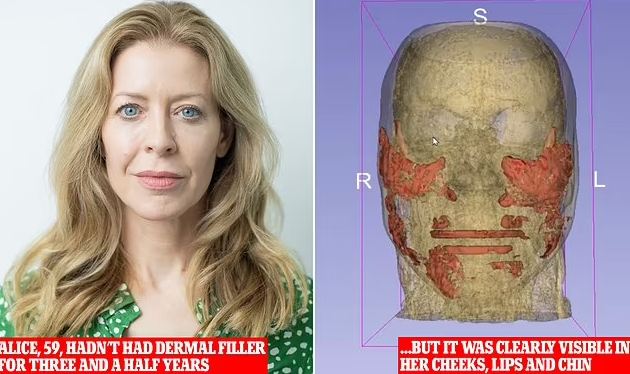I never thought a routine MRI scan could teach me something so unexpected about my past filler treatments. At 33, I agreed to do imaging for unrelated health reasons. But as the radiologist examined my face, I saw something odd traces of dermal filler lingering where I thought it had long disappeared. That moment became a turning point: suddenly I realized that filler can behave in ways I never fully understood.
What I Believed About Fillers
When I first got filler, I assumed it would fade naturally after a year or so. That’s what most people say: fillers are temporary, and the body breaks them down over time. I remembered the smooth fullness I felt just after injections, and I believed that absence of noticeable volume meant the filler was gone. I didn’t expect it to stay or move. I was wrong.

MRI Reveals Longevity
The MRI images told a different story. Even years after my last session, the scans showed persistent filler in areas where it had been injected. In fact, research supports this: studies over multiple years have found hyaluronic acid fillers still present after long periods.
These findings challenged my assumptions — my body didn’t fully “clear out” the filler as I thought.
Filler Migration: Not Just Dissolving
What surprised me even more is that filler doesn’t just vanish — sometimes it shifts. Over time, some of the gel moves from its original placement to other spots. This migration can happen gradually, influenced by factors like gravity, muscle movement, or even the way the filler was injected. It’s not always dramatic, but subtle shifts can lead to traces of filler appearing in unexpected places.
Why It Lasts Longer Than I Thought
I learned that not all fillers degrade at the same rate. Hyaluronic acid fillers, in particular, can hang around much longer than common belief suggests. Their structure — especially when cross-linked — means they resist rapid breakdown. Enzymes in my body, like hyaluronidase, slowly digest the material, but it happens far more slowly than a few months.
Mechanisms at Play
There are several ways filler can persist or migrate:
- Poor injection technique or overfilling can increase the risk of movement.
- Pressure from muscles, gravity, and even massage can nudge the filler over time.
- Some filler types resist breakdown because of their chemical structure, sticking around for years.
The Reality of Long-Term Filler
What I took away from my MRI experience is that filler isn’t as temporary as I believed. It can remain in my tissues for much longer than advertised, and it doesn’t always stay put. Knowing this makes me rethink every past decision I made about cosmetic injections. It’s not just about how much filler I used, but where and how it was injected.
My New Outlook
From now on, I’ll approach filler with more caution and respect. I realize that once it’s in, it may stay in — at least for a long time. This doesn’t mean I’ll necessarily avoid filler altogether, but I’ll make sure to work with professionals who understand facial anatomy deeply and use techniques that minimize risk. I also want to consider the long-term picture, not just the immediate results.

Final Thoughts
That MRI scan changed how I think about aesthetic treatments. What I once believed was a harmless, short-lived cosmetic choice turned out to be something more permanent, unpredictable, and complicated. I now value transparency, patience, and well-informed decisions. After all, understanding where filler goes — and how long it can stay — isn’t just cosmetic knowledge. It’s a lesson in how our bodies carry the past, sometimes in places we least expect.

















